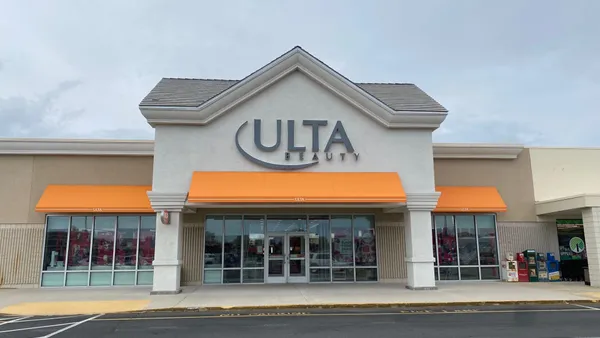Dive Brief:
-
Levi's on Tuesday said in a press release that this year it will eliminate about 700 global non-retail and non-manufacturing jobs, or 15% of that workforce.
-
The denim retailer also reported that, with both company and third-party stores closed due to the pandemic for most of the second quarter, net revenues in the period fell 62% to $0.5 billion, offset partly by 25% growth in e-commerce. Digital sales were 15% of total company revenue, compared to 5% a year ago, and grew at a faster rate than previously.
-
Levi's swung to an adjusted net loss of $192 million from adjusted net income of $69 million last year, and loss before interest and taxes reached $206 million, partially offset by cost cuts. The period's $448 million operating loss reflects the lower adjusted EBIT plus $67 million in restructuring charges, $87 million in COVID-19-related inventory costs and $88 million of other COVID-19-related charges for customer receivables and asset impairments, the company said.
Dive Insight:
Levi's had already been taking greater control of its own retail operations, including through e-commerce, before the pandemic hit, so it's not all that surprising that its retail and manufacturing operations were spared job cuts.
In fact, the brand is one of the few retailers actually opening new stores, a total of 30 year to date, mostly abroad, according to CFO Harmit Singh. "[W]e are using this crisis to not only ensure that we get the best locations but also structure more favorable lease terms," he told analysts Tuesday, according to a transcript from Seeking Alpha.
The company is once again running about 90% of its stores worldwide, with curbside pickup offered at 80% of U.S. stores, CEO Chip Bergh told analysts. Nearly a third of online orders were fulfilled by stores in May, he said. Levi's launched a virtual concierge offering one-one-one interactions with stores and is testing appointment scheduling and same-day delivery in select stores, he also said.
Levi's is well positioned to benefit from some of the changes brought on or accelerated by the pandemic, including the casualization of fashion and changing shopping behavior, Bergh said. "With approximately 85% of our stores in the U.S. located in open air venues such as strips, outlets and off mall, we expect these locations will be more preferred shopping venues as consumers consider health and safety," he said.
Wholesale is another matter. The company took a charge of $28 million for receivables due to the impact of COVID on its wholesale revenue. In the quarter, wholesale margin "declined by a few points, primarily reflecting higher proportion of discounted sales in Europe as they actively manage down inventory levels," Singh said.
Further, the company expects a "couple of hundred" distribution points to disappear over the next twelve months or so, Bergh said. Some of that will be made up through retail, he said, but added "there are still wholesale opportunities for us."















